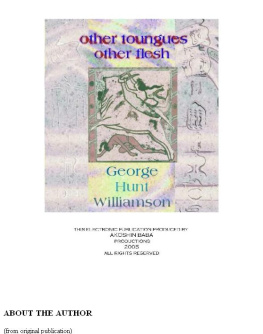First published in Great Britain in 2017 by University of Hertfordshire Press
College Lane
Hatfield
Hertfordshire
AL10 9AB
Tom Williamson, Gerry Barnes and Toby Pillatt 2017
The right of Tom Williamson, Gerry Barnes and Toby Pillatt to be identified as the authors of this work has been asserted by them in accordance with the Copyright, Designs and Patents Act 1988.
All rights reserved. No part of this book may be reproduced or utilised in any form or by any means, electronic or mechanical, including photocopying, recording or by any information storage and retrieval system, without permission in writing from the publisher.
British Library Cataloguing in Publication Data
A catalogue record for this book is available from the British Library
ISBN 978-1-909291-96-6
Design by Arthouse Publishing Solutions Ltd
Printed in Great Britain by Charlesworth Press, Wakefield
Contents
Abbreviations
Barn | Barnsley Record Office |
Bev | Beverley Record Office |
Brad | Bradford Record Office |
Bury St Edmunds RO | Bury St Edmunds Record Office |
Cald | Calderdale Record Office |
Don | Doncaster Record Office |
DRO | Dorest Record Office |
ERO | Essex Record Office |
HALS | Hertfordshire Archives and Local History |
HAR | Herefordshire Archives and Records Hull Hull Record Office |
Ipswich RO | Ipswich Record Office |
KHL | Kent History and Library Centre, Maidstone |
Kirk | Kirklees Record Office, Huddersfield |
Lds | Leeds Record Office |
NHRO | Northamptonshire Record Office |
NRO | Norfolk Record Office |
Nrth | Northallerton Record Office |
PRO/TNA | Public Record Office/The National Archives, Kew |
SA | Shropshire Archives |
Shf | Sheffield Record Office |
Figures
Acknowledgements
A large number of individuals and organisations have helped with this book. We would like to thank, in particular, the Arts and Humanities Research Council, DEFRA and the Woodland Trust, who provided financial support for much of the research presented here, and the University of East Anglia, who provided support towards publication costs. We are also grateful to Nick Atkinson, Peter Austin, Karen Barnes, Gary Battell, Liz Bellamy, Teresa Betterton, Richard Brooke, Peter Clarke, Sid Cooper, Patsy Dallas, Paul Dolman, Andrew Falcon, David Fox, Rob Fuller, Justin Gilbert, Jon Gregory, Rory Hart, Robert Liddiard, Jim Lyon, Andrew MacNair, Sam Neal, Nicola Orchard, Crispin Powell, Mark Pritchard, Rachel Riley, Ian Rotherham, Anne Rowe, Sarah Rutherford, Steve Scott and Adam Stone, all of whom provided help, advice, encouragement or information. Lastly, we would like to thank the staff of Essex Record Office, the Herefordshire Archives and Records Centre, Hertfordshire Archives and Local History, Kent History and Library Centre, Norfolk Record Office, Northamptonshire Record Office, Shropshire Archives, the Suffolk Record Offices at Ipswich and Bury St Edmunds, the National Archives and the various Yorkshire record offices for all their help and assistance.
The photographs, maps and diagrams are our own, except: (Richard Revel).
are from that of the Yale Centre for British Art, and are reproduced with permission.

CHAPTER ONE
Introduction: trees, woods and history
The trouble with trees
English trees, and especially those growing in rural areas, have become a topic of growing concern not only to foresters and scientists but to all who are interested in the countryside and its wildlife. There is a widely shared belief that we have lost, and are still losing, trees from the landscape at a rapid rate, and that our woods or at least our ancient, semi-natural woods have been steadily disappearing over the last half century, either replanted with alien conifers or cleared to make way for farmland, large-scale urbanisation or industry. Wider changes in the global environment have seen woodland devastated by storms, most notably the great gale of 1987. Most worrying of all is the fact that the health of Englands trees appears to be deteriorating. The terrible toll taken by Dutch elm disease in the 1970s and 1980s has been followed by a string of further epidemics, including canker and leaf miner in horse chestnut, oak processionary moth, Phytophthora ramorum in larch and, most recently and most worryingly, ash Chalara (Cheffings and Lawrence 2014) (). All are caused by invasive organisms fungi, bacteria or insects and have thus been seen as a consequence of globalisation, perhaps compounded by the impact of climate change (Brasier 2008). There are further threats of this kind on the horizon, moreover, including emerald ash borer, pine processionary moth and citrus longhorn beetle. In addition, tree health appears to be suffering a more general deterioration, manifested in the identification of such complex and diffuse conditions as oak decline and ash dieback (Denman and Webber 2009). Both involve a progressive thinning of the crown of affected trees, accompanied by signs of general ill-health, gradually leading to the death of the specimen. An acute variant of the former disease, leading to more rapid death and with debated causes, has also been identified. Our trees are in trouble.
The purpose of this book is not to discuss, in scientific terms, these challenges, but rather to place them within a wider historical context. Only then, we would argue, can we take appropriate action to improve matters or, in some cases, adopt a more relaxed approach. More specifically, we attempt in the pages that follow to assess how the numbers of trees and the extent of woodland in England have really changed over the last few hundred years, and to explain why. Trees were generally grown for a purpose, and recent changes in their numbers and distribution are not the consequence of mindless vandalism or deliberate hostility to the natural world but rather the result of definable economic, social and ideological developments, which we need to explore and understand. An historic approach can also help us to put current issues with tree health in perspective, allowing us to assess, for example, the extent to which trees have always suffered from pests and diseases. This is important because some recent writings appear to assume that, in the past, trees lived in a state of perpetual rude health, untroubled by illness. Historical enquiries can also help us to identify medium- or long-term changes in the environment (in addition to the increased movement of wood, timber and live plant materials around the globe) that might have contributed to declining levels of arboreal health. Above all, such investigations can provide a better understanding of the true character of our tree populations and can help us to assess whether the ways in which these have developed over time in terms of species composition, management and age structure might have increased their susceptibility to infection. It is often assumed that the particular kinds of tree we find in the countryside the ubiquity of ash (















 CHAPTER ONE
CHAPTER ONE